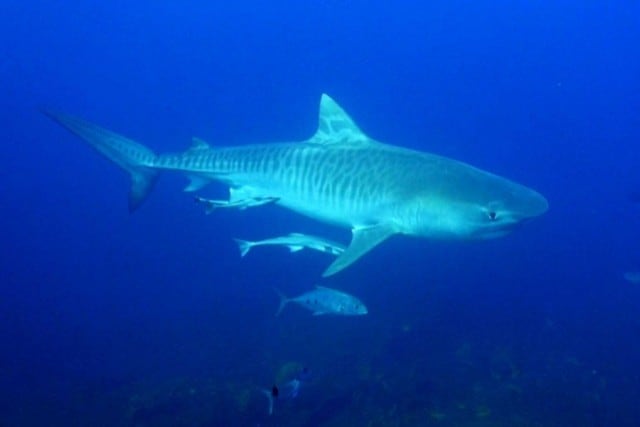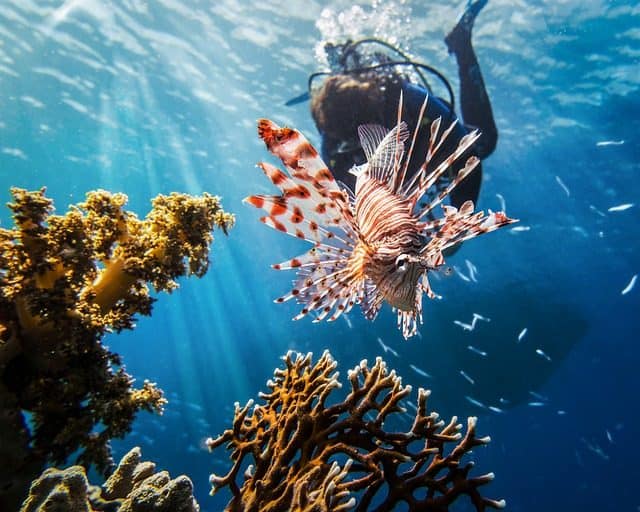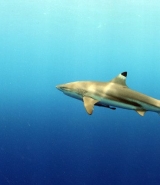Are you one of those individuals fascinated by the marine world, with a thing for extreme sports, but a desire to stay safe? Watching videos of shark attacks and lurking online to find articles about the sea life that can harm you, or kill you? Oh well, it’s kind of something I do too. So, I decided to make both our lives easier and make a top 5 of underwater creatures that scuba divers should be cautious around.
First, it’s useful to highlight that despite the sharks I will mention, there are far more dangerous marine animals to be scared of. Indeed, movies like Jaws and, most recently, The Shallows, don’t quite happen in the real life. In fact, they are thrillers which are meant for the “couch” type of adrenaline junky! Plus, you have to admit that a movie about a diver that steps on a stone fish would be quite boring. Don’t you think?
Secondly, it’s important to note that most marine animals are not aggressive, and won’t attack you… unless they feel threatened in the first place. Keeping this in mind, you can reduce your chances of accidentally threatening a marine creature by being a responsible diver. Mostly, it’s all about great buoyancy control and a respectful behavior while underwater. Alright, let’s dive right in!
1. Shark diving… or surfing?
Sharks are numerous and found everywhere in the world. Plus, if you count beachgoers, snorkelers, surfers and scuba divers, it puts a whole lot of humans into the sharks’ habitat. Indeed, if you consider these facts, sharks are very far from being a serious threat. Plus, unlike the other potentially deadly creatures we mention below, sharks are more dangerous to humans that stay on the surface, than to the ones who dive below.

Now, to be consistent with the post’s title, the three sharks you don’t want to mess with are the Great White, the Tiger Shark and the Bull Shark. First, the great whites are dangerous because if they do attack, it’s swift and powerful, so easily harmful to our small human bodies, but not necessarily deadly. Actually, according to the international shark attack file, less than 1 third of great white shark attacks were fatal.
Now, the tiger shark is dangerous due to its large size and curious nature. They munch on pretty much anything, so making low profile underwater sounds like a good idea. Again, it’s much less risky to be into the blue with them, than on top of them. Finally, the bull shark is considered dangerous to humans because of its tendency to hang around in shallow waters. Indeed, the bull sharks, among other species, comes closer to the shoreline. Also, their eyes are small for their size, and it could apparently explain why they mistake humans for tastier preys.
.
Stonefish
Let’s say this straight: this fish that literally looks like coral is the most venomous on earth. Yes. Plus, any interaction with this fish is most likely accidental, as they do not attack at all. The good news is that if you follow environment-friendly diving rules, you are not supposed to ever come in contact with stone fish.
In other words, these 30-45 cm creatures should frighten you more than great white sharks. They are found in shallow waters in the whole indo-pacific region. Exactly where we love the beaches, colorful reefs, and snorkeling opportunities.
How not to get stung by a stonefish? Easy! Follow the 10-items list on how to be a responsible scuba diver. Mostly, control your buoyancy, and don’t touch or step on the coral.
.
Lionfish
The lionfish are also poisonous, but to a lesser degree than the stonefish. Still, being stung by them can cause breathing difficulties and thus, requires emergency care.

The lionfish is originally from the warm waters of the Indian and South-pacific oceans but is now found elsewhere. In fact, they are literally invading the coast of Florida and threatening many native fish and coral species of the area. Indeed, the lionfish is poisonous to many species, and as their number increases, they wreak havoc on the seabeds where they live.
.
Blue-ringed octopus
The Blue-ringed octopus is actually more common than we know but is rarely seen. Indeed, they are little, 5 to 8 inches, creatures mostly using camouflage and hiding in dead shells. They are found in shallow waters around reefs as well as in tidal pools.
These might look cute, but we sure want them to stay away as their venom is fast-acting and has no known remedy. In fact, the blue ringed-octopus kills its prey thanks to a paralyzing venom. A human victim can survive if CPR / artificial breathing is applied right after the sting, as soon as the first sign of distress show, and for as long as the breathing muscles are unresponsive.
One of the scariest thing about this tiny octopus is that victim often doesn’t feel the bite. Thus, you only know when the first symptoms of distress show, and then you need to act fast to stand a chance to survive.

.
Box Jellyfish
The different kinds of box jellyfish are not the usual jellies leaving you with only an annoying burn on the stomach. In fact, they’re much worse as their poison not only burns but can kill you before you reached shore. There’s no official death toll related to them, but in the Philippines alone, they talk of an average of 30 fatalities each year.
The best way to avoid any incident with box jellyfish is to be aware of when and where they hit the coasts. Besides Australia, which has lots of data on box jellyfish incidents, most countries don’t. Thus, it’s hard to know where and when to avoid some beaches occupied by the nasty jellies.
There is a website that has set up a calendar to help people plan their beach outings the safest possible way around Southeast Asia. It’s right here. Otherwise, the best way would be to ask the locals and get a day to day information.
- Australia: October/November to May/June – Queensland, Northern Territory & Western Australia. Rarely found on the Great Barrier Reef according to Barrierreefaustralia.com
Please remember that most of the creatures above are harmful, but fatalities related to them are only a limited number. Plus, humans are far more dangerous than most of them… Indeed, if these critters could write blog posts, they would certainly warn their friends about the deadly human that invades their habitat… So, head to the beach, be cautious, but respectful! 
Have you ever encountered any of the deadliest sea creatures? We want to know! Please leave a comment below! ⇓
 Destinations
Destinations










I have stepped in a stone fish before. It was right at the beach shore, on the sand, few meters from the corals. I had just get back to the boat after snorkeling, changed my boots to flip flops to enjoy the beach. When I stepped down on the sand I felt a strong pain, I could not realize what was going on. The boat crew right away saw the stone fish from the boat and carried me to the island. They dipped my feet in hot water, while I could feel the venom going up on my leg. After a few minutes, they brought me back in the boat and we returned to the villa of El Nido, in the Philippines. I arrived at the small hospital and quickly they injected into my vein painkiller,
anti-inflammatory and antibiotic. My feet remained swallowed for many days and I was limping for 3 months. All of that because one spine has touched the side of my foot.
Hi Luiza! This sound very painful indeed! I’m sorry it happened to you and glad that they reacted quickly to help you!
Thank you so much for sharing your experience with us!
Wishing you best bubbles and no stone fish for the future!
I see stone fish almost every time I snorkel in Bonaire. The first time I saw one was in about 2 feet of water near the shore, nowhere near coral. They blend in best near sand and stones, not the colorful coral… so it’s terribly misleading to say you’ll be fine if you just “control buoyancy and don’t step on the corals”. You have to put your feet down eventually. And as with many venomous fish, they don’t feel threatened easily. It takes a lot to make them move. Keep a sharp eye even when you’re away from the coral and just walking into shore! I now take my fins off and wave them around on the rocks and sand right near the shore when I need to come in. They have some of the best camouflage… you won’t see them until you’re right on top of them sometimes.